System Design and Reliability Improvement of Wireless Sensor Network in Plant Factory Scenario
Abstract
1. Introduction
- Developing a nonlinear link quality prediction model suitable for plant factory scenarios based on function fitting methods;
- Designing a reliable network coverage optimization scheme by integrating the particle swarm optimization (PSO) algorithm with the link quality prediction model;
- Proposing a reliable clustering routing protocol by combining the network coverage optimization scheme with the K-means algorithm.
2. Materials and Methods
2.1. Experimental Site Description
2.2. Wireless Sensor Network System Design
2.3. Link Quality Prediction Model Development
2.3.1. Link Quality Estimator Selection
2.3.2. Link Quality Data Acquisition
2.3.3. Accuracy Test of Link Quality Prediction Model
2.4. Network Coverage Optimization Model Development
2.4.1. PSO Algorithm
2.4.2. Model Evaluation Indicators
2.5. Design of Reliable Cluster Routing Protocols
2.5.1. K-Means Algorithm
- (1)
- No points were reassigned to different clusters;
- (2)
- No center of mass changed again;
- (3)
- The sum of squared errors was minimized locally.
2.5.2. Evaluation Indicators
3. Results and Discussions
3.1. Analysis of Link Quality Prediction Model Results
3.2. Evaluation of Network Coverage Optimization Model
3.3. Assessment of Clustered Routing Protocols
4. Conclusions
Author Contributions
Funding
Data Availability Statement
Acknowledgments
Conflicts of Interest
References
- Zhang, Z.; Zhu, Z.; Gao, G.; Qu, D.; Zhong, J.; Jia, D.; Du, X.; Yang, X.; Pan, S. Design and Research of Digital Twin System for Multi-Environmental Variable Mapping in Plant Factory. Comput. Electron. Agric. 2023, 213, 108243. [Google Scholar] [CrossRef]
- Wang, H.; Meng, X.; Chen, Z.; Zhang, X.; Cheng, R.; Zhang, Y.; Li, W.; Song, W.; Zhang, Y. A Feedback Control Method for Plant Factory Environment Based on Photosynthetic Rate Prediction Model. Comput. Electron. Agric. 2023, 211, 108007. [Google Scholar] [CrossRef]
- Lanoue, J.; St. Louis, S.; Little, C.; Hao, X. Continuous Lighting Can Improve Yield and Reduce Energy Costs While Increasing or Maintaining Nutritional Contents of Microgreens. Front. Plant Sci. 2022, 13, 983222. [Google Scholar] [CrossRef] [PubMed]
- Bai, X.; Wang, Z.; Zou, L.; Alsaadi, F.E. Collaborative Fusion Estimation over Wireless Sensor Networks for Monitoring CO2 Concentration in a Greenhouse. Inf. Fusion 2018, 42, 119–126. [Google Scholar] [CrossRef]
- Aruchamy, P.; Balraj, L.; Sowndarya, K.K.D. An Energy-Aware Link Fault Detection and Recovery Scheme for QoS Enhancement in Internet of Things-Enabled Wireless Sensor Network. Comput. Electr. Eng. 2025, 123, 110092. [Google Scholar] [CrossRef]
- Baccour, N.; Koubâa, A.; Ben Jamâa, M.; Do Rosário, D.; Youssef, H.; Alves, M.; Becker, L.B. RadiaLE: A Framework for Designing and Assessing Link Quality Estimators in Wireless Sensor Networks. Ad Hoc Netw. 2011, 9, 1165–1185. [Google Scholar] [CrossRef]
- Xu, J.; Xia, Y.; Xie, J.; Liu, W.; Luo, R.; Hu, S.; Huang, D. Faster or Slower: Convergence of Link Quality Metrics in Wireless Sensor Networks. In Proceedings of the 2020 IEEE 6th International Conference on Computer and Communications (ICCC), Chengdu, China, 11–14 December 2020; IEEE: Piscataway, NJ, USA, 2020; pp. 357–362. [Google Scholar]
- Amorim, R.; Mogensen, P.; Sorensen, T.; Kovacs, I.Z.; Wigard, J. Pathloss Measurements and Modeling for UAVs Connected to Cellular Networks. In Proceedings of the 2017 IEEE 85th Vehicular Technology Conference (VTC Spring), Sydney, NSW, Australia, 4–7 June 2017; IEEE: Piscataway, NJ, USA, 2017; pp. 1–6. [Google Scholar]
- Bi, S.; Zeng, Y.; Zhang, R. Wireless Powered Communication Networks: An Overview. IEEE Wirel. Commun. 2016, 23, 10–18. [Google Scholar] [CrossRef]
- Hui, L.; LinLan, L. A Link Quality Estimation Method for Wireless Sensor Networks Based on the Ladder Network. In Proceedings of the 2021 IEEE 4th International Conference on Computer and Communication Engineering Technology (CCET), Beijing, China, 13–15 August 2021; IEEE: Piscataway, NJ, USA, 2021; pp. 341–344. [Google Scholar]
- Jawad, H.M.; Jawad, A.M.; Nordin, R.; Gharghan, S.K.; Abdullah, N.F.; Ismail, M.; Abu-AlShaeer, M.J. Accurate Empirical Path-Loss Model Based on Particle Swarm Optimization for Wireless Sensor Networks in Smart Agriculture. IEEE Sens. J. 2020, 20, 552–561. [Google Scholar] [CrossRef]
- Raheemah, A.; Sabri, N.; Salim, M.S.; Ehkan, P.; Ahmad, R.B. New Empirical Path Loss Model for Wireless Sensor Networks in Mango Greenhouses. Comput. Electron. Agric. 2016, 127, 553–560. [Google Scholar] [CrossRef]
- Laboratory RITM, ENSEM, Hassan II University of Casablanca, Casablanca, Morocco; Rais, A.; Bouragba, K.; Ouzzif, M. Optimal Routing and Clustering Technique for Wireless Sensor Networks. J. Commun. 2019, 14, 758–764. [Google Scholar] [CrossRef]
- Shao, X.; Wang, C.-X.; Rao, Y. Network Coding Aware QoS Routing for Wireless Sensor Network. J. Commun. 2015, 10, 24–32. [Google Scholar] [CrossRef]
- Yu, X.; Duan, Y.; Cai, Z.; Luo, W. An Adaptive Learning Grey Wolf Optimizer for Coverage Optimization in WSNs. Expert Syst. Appl. 2024, 238, 121917. [Google Scholar] [CrossRef]
- Wang, X.; Zhang, H.; Fan, S.; Gu, H. Coverage Control of Sensor Networks in IoT Based on RPSO. IEEE Internet Things J. 2018, 5, 3521–3532. [Google Scholar] [CrossRef]
- Zhou, Y.; Zhang, L.; Li, W. Partitioned Uneven Cluster Routing Algorithm Based on Gray Wolf Optimization in WSNs. Ad Hoc Netw. 2024, 163, 103564. [Google Scholar] [CrossRef]
- Xu, K.; Zhao, Z.; Luo, Y.; Hui, G.; Hu, L. An Energy-Efficient Clustering Routing Protocol Based on a High-QoS Node Deployment with an Inter-Cluster Routing Mechanism in WSNs. Sensors 2019, 19, 2752. [Google Scholar] [CrossRef]
- Li, Y.; Zhao, L.; Wang, Y.; Wen, Q. Improved Sand Cat Swarm Optimization Algorithm for Enhancing Coverage of Wireless Sensor Networks. Measurement 2024, 233, 114649. [Google Scholar] [CrossRef]
- Sakthipriya, S.; Naresh, R. Precision Agriculture Based on Convolutional Neural Network in Rice Production Nutrient Management Using Machine Learning Genetic Algorithm. Eng. Appl. Artif. Intell. 2024, 130, 107682. [Google Scholar] [CrossRef]
- Wang, J.; Cao, Y.; Li, B.; Kim, H.; Lee, S. Particle Swarm Optimization Based Clustering Algorithm with Mobile Sink for WSNs. Future Gener. Comput. Syst. 2017, 76, 452–457. [Google Scholar] [CrossRef]
- Zhou, X.; Wu, Y.; Zhong, M.; Wang, M. Artificial Bee Colony Algorithm Based on Adaptive Neighborhood Topologies. Inf. Sci. 2022, 610, 1078–1101. [Google Scholar] [CrossRef]
- Wu, L.; Yang, K.; Zhong, Y.; Lin, J. Population-Based Simulated Annealing Algorithm for the Min-Degree Constrained Minimum Spanning Tree Problem. Swarm Evol. Comput. 2025, 92, 101791. [Google Scholar] [CrossRef]
- Zhou, X.; Wu, Y.; Zhong, M.; Wang, M. Artificial Bee Colony Algorithm Based on Multiple Neighborhood Topologies. Appl. Soft Comput. 2021, 111, 107697. [Google Scholar] [CrossRef]
- Swathi, B.; Amanullah, D.M.; Kalaiselvan, S.A. Energy-Efficient and Fault-Tolerant Routing Mechanism for WSN Using Optimizer Based Deep Learning Model. Sustain. Comput. Inform. Syst. 2024, 44, 101044. [Google Scholar] [CrossRef]
- Singh, K.; Singh, K.; Son, L.H.; Aziz, A. Congestion Control in Wireless Sensor Networks by Hybrid Multi-Objective Optimization Algorithm. Comput. Netw. 2018, 138, 90–107. [Google Scholar] [CrossRef]
- Liao, M.-S.; Chen, S.-F.; Chou, C.-Y.; Chen, H.-Y.; Yeh, S.-H.; Chang, Y.-C.; Jiang, J.-A. On Precisely Relating the Growth of Phalaenopsis Leaves to Greenhouse Environmental Factors by Using an IoT-Based Monitoring System. Comput. Electron. Agric. 2017, 136, 125–139. [Google Scholar] [CrossRef]
- Xia, S.; Nan, X.; Cai, X.; Lu, X. Data Fusion Based Wireless Temperature Monitoring System Applied to Intelligent Greenhouse. Comput. Electron. Agric. 2022, 192, 106576. [Google Scholar] [CrossRef]
- Singh, R.; Aernouts, M.; De Meyer, M.; Weyn, M.; Berkvens, R. Leveraging LoRaWAN Technology for Precision Agriculture in Greenhouses. Sensors 2020, 20, 1827. [Google Scholar] [CrossRef]
- Ji, W.; Zheng, B.-Y. A Novel Cooperative MAC Protocol for WSN Based on NDMA. In Proceedings of the 2006 8th International Conference on Signal Processing, Guilin, China, 16–20 November 2006; IEEE: Piscataway, NJ, USA, 2006; p. 4129751. [Google Scholar]
- Xu, M.; Zhang, Q.; Zhao, Y.; Wang, W.; Xia, Y.; Liu, W.; Hu, S.; Huang, D. Statistical Characteristic of Link Quality Metrics in UAV Assisted Low Power Wireless Networks. In Proceedings of the 2022 IEEE International Conference on Unmanned Systems (ICUS), Guangzhou, China, 28–30 October 2022; IEEE: Piscataway, NJ, USA, 2022; pp. 333–339. [Google Scholar]
- Mo, W.; He, Z.; Xing, C.; Yu, Z. A Flexible Hinge FBG Accelerometer Based on PSO Algorithm. Opt. Fiber Technol. 2024, 87, 103905. [Google Scholar] [CrossRef]
- Wu, W.; Wang, W.; Jia, X.; Feng, X. Transformer Autoencoder for K-Means Efficient Clustering. Eng. Appl. Artif. Intell. 2024, 133, 108612. [Google Scholar] [CrossRef]
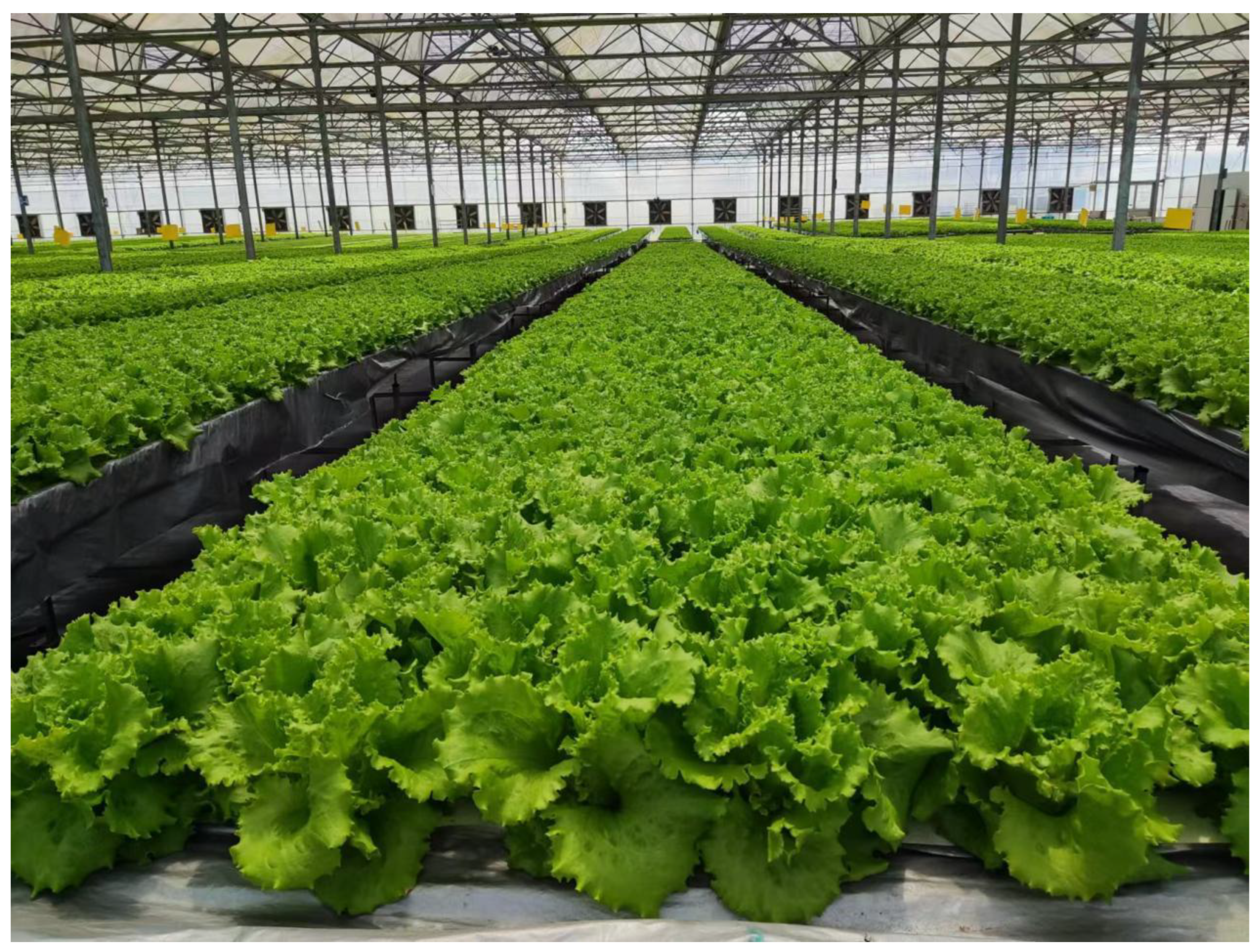
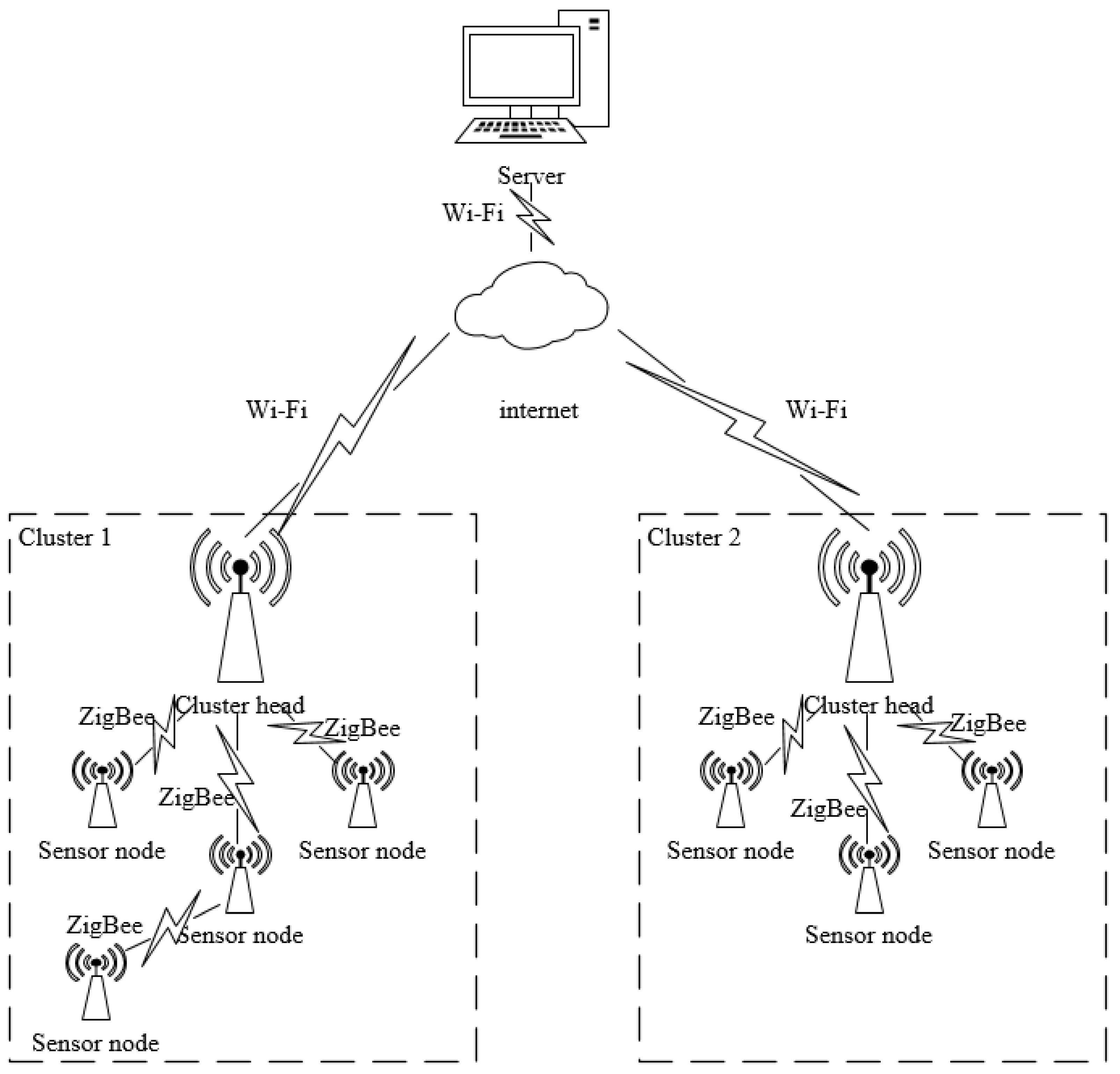
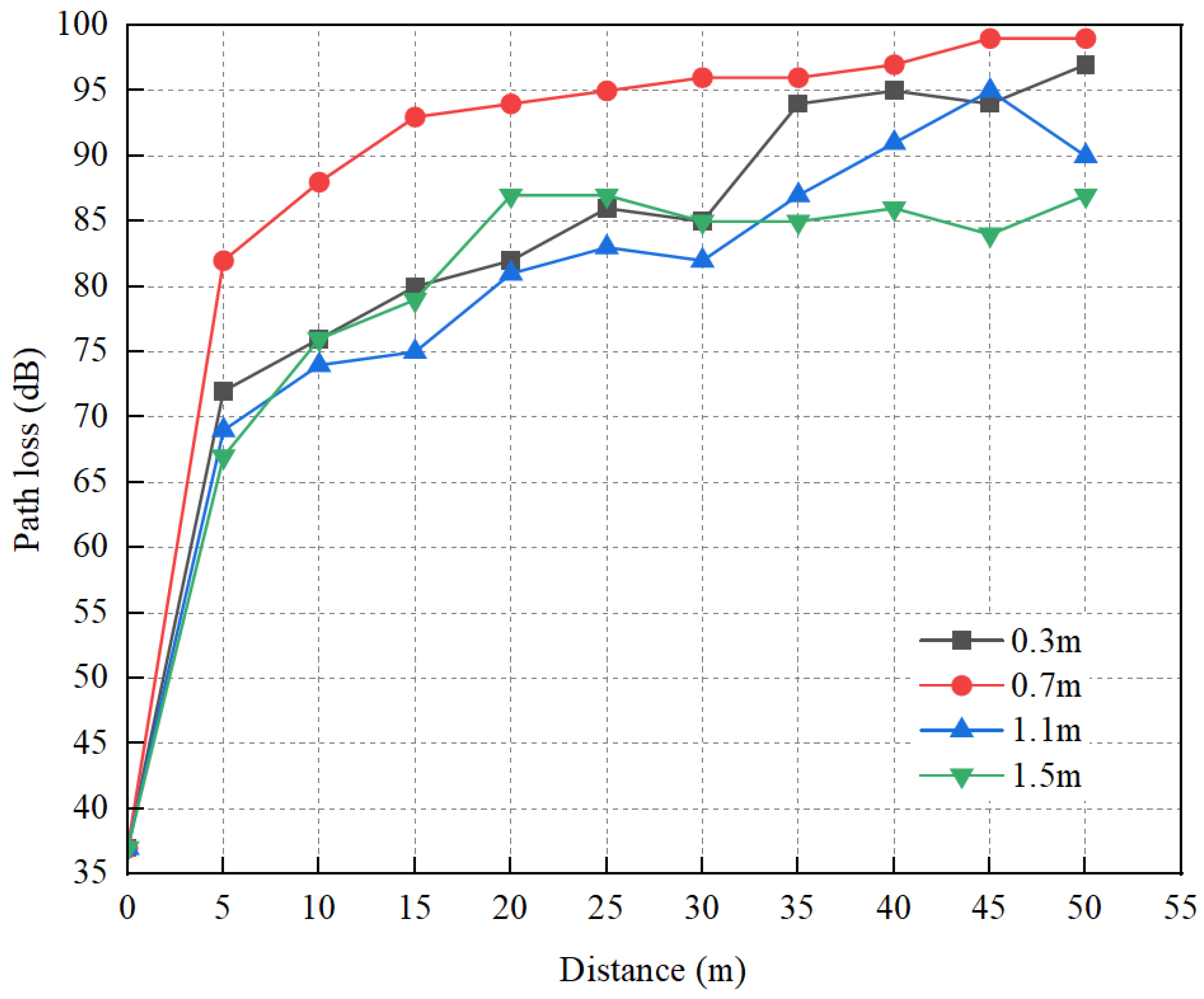
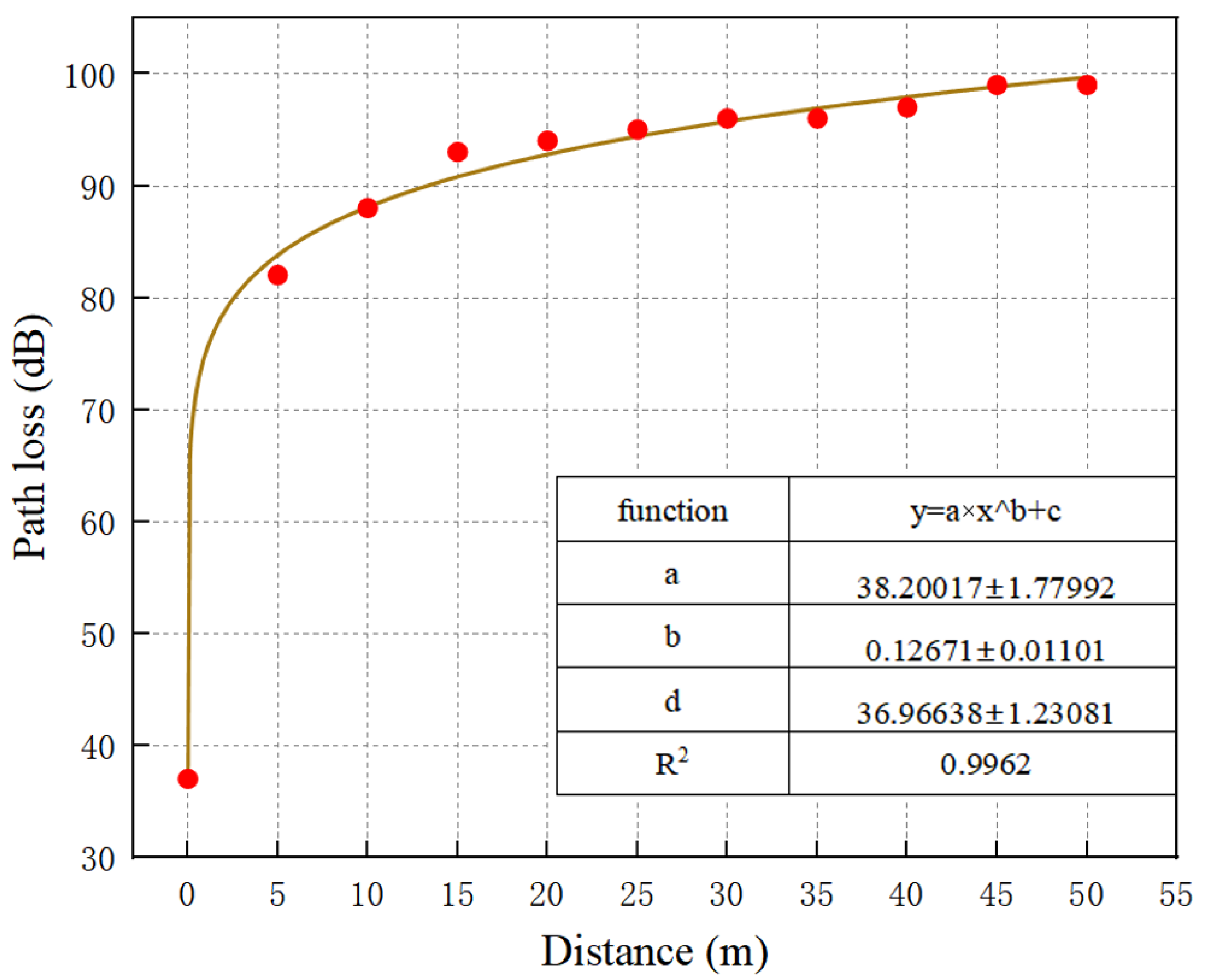
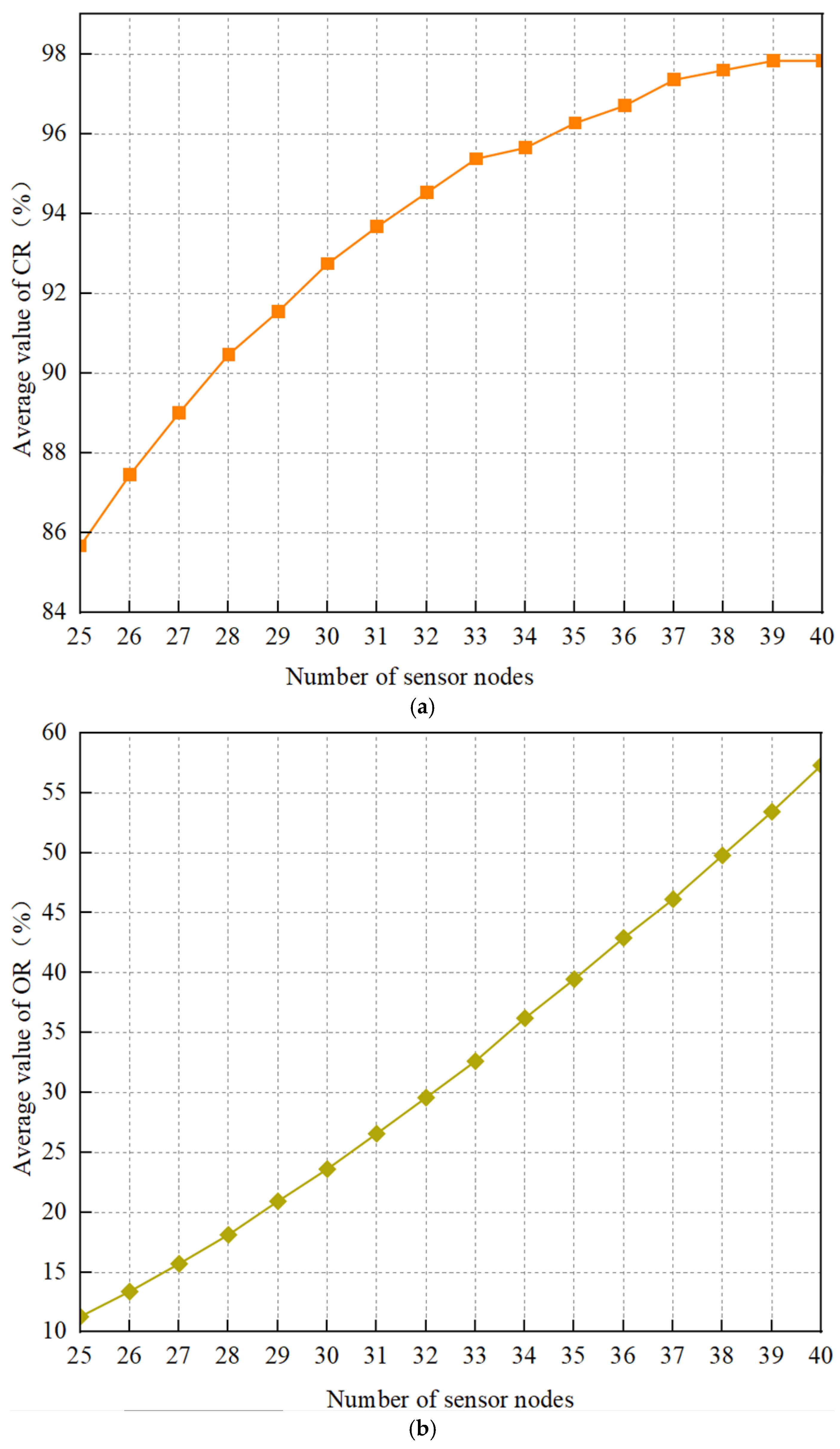
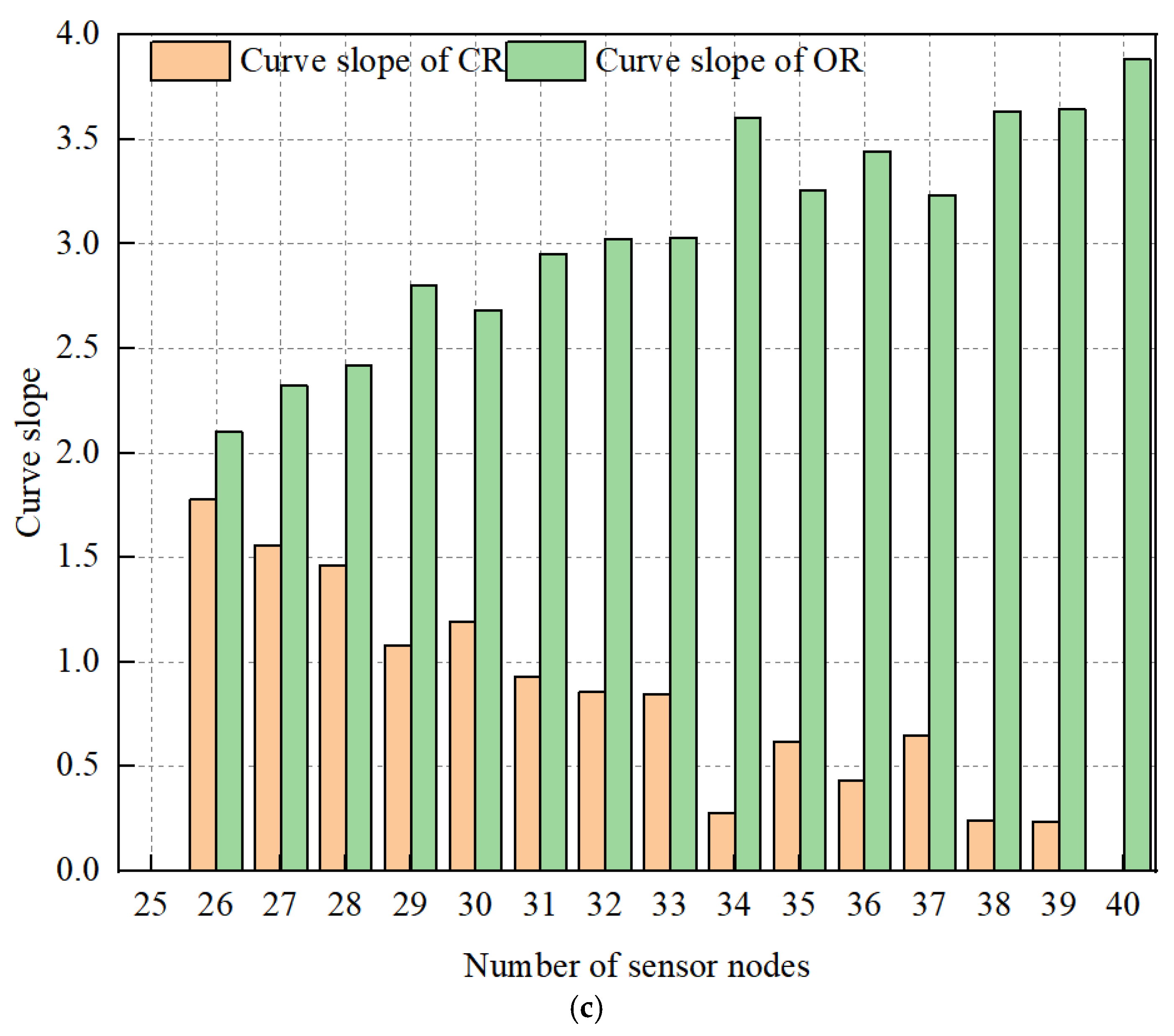
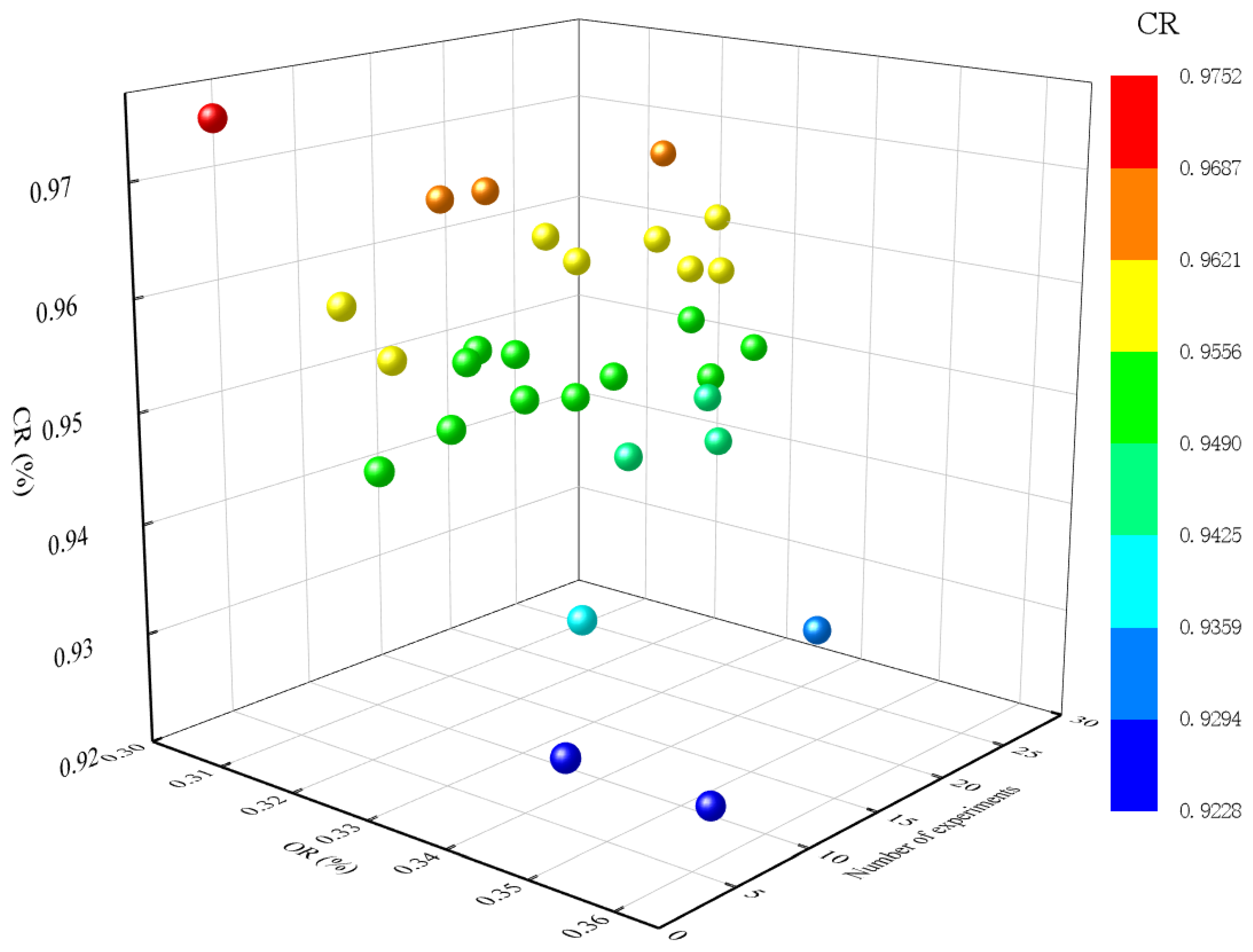
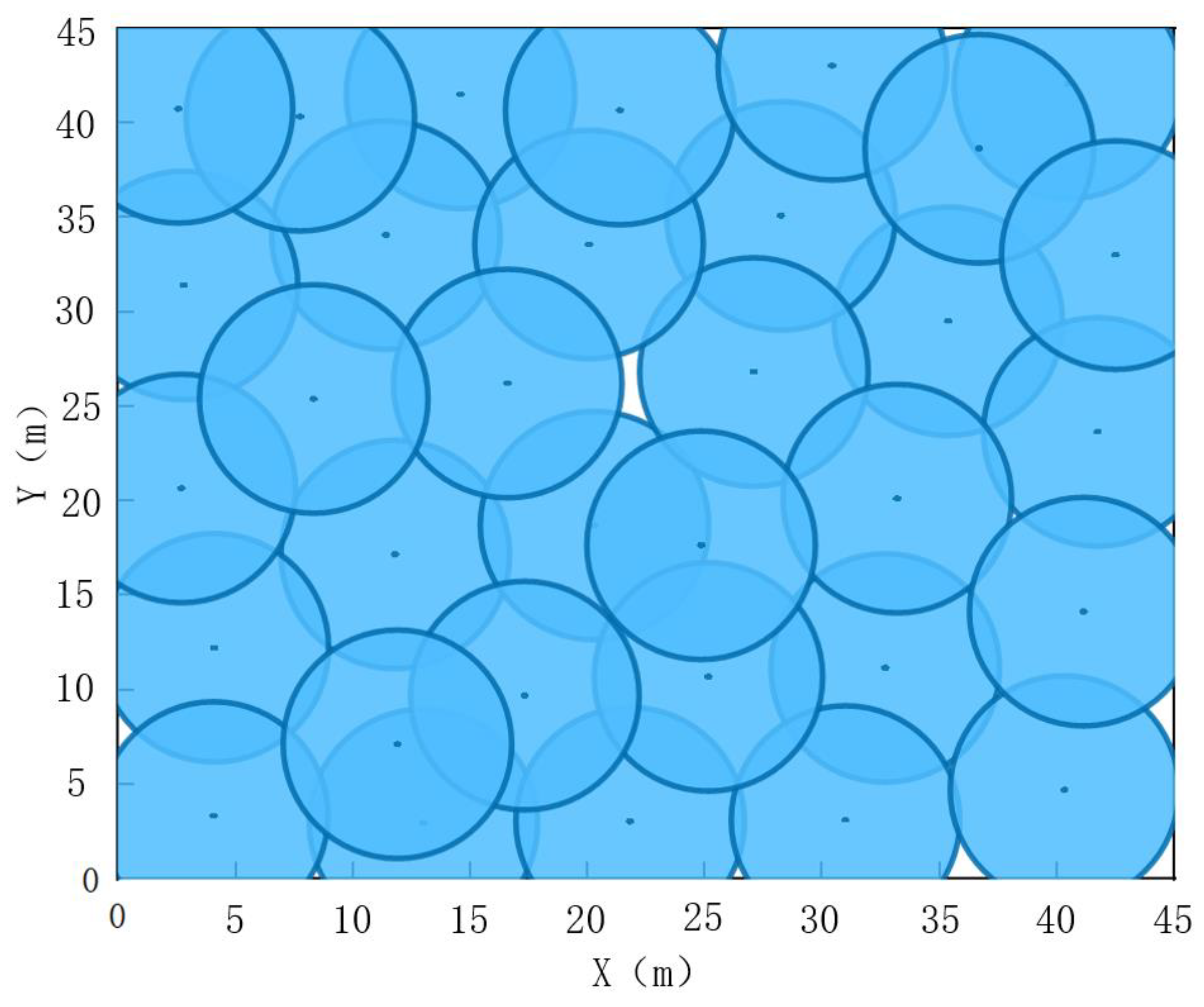
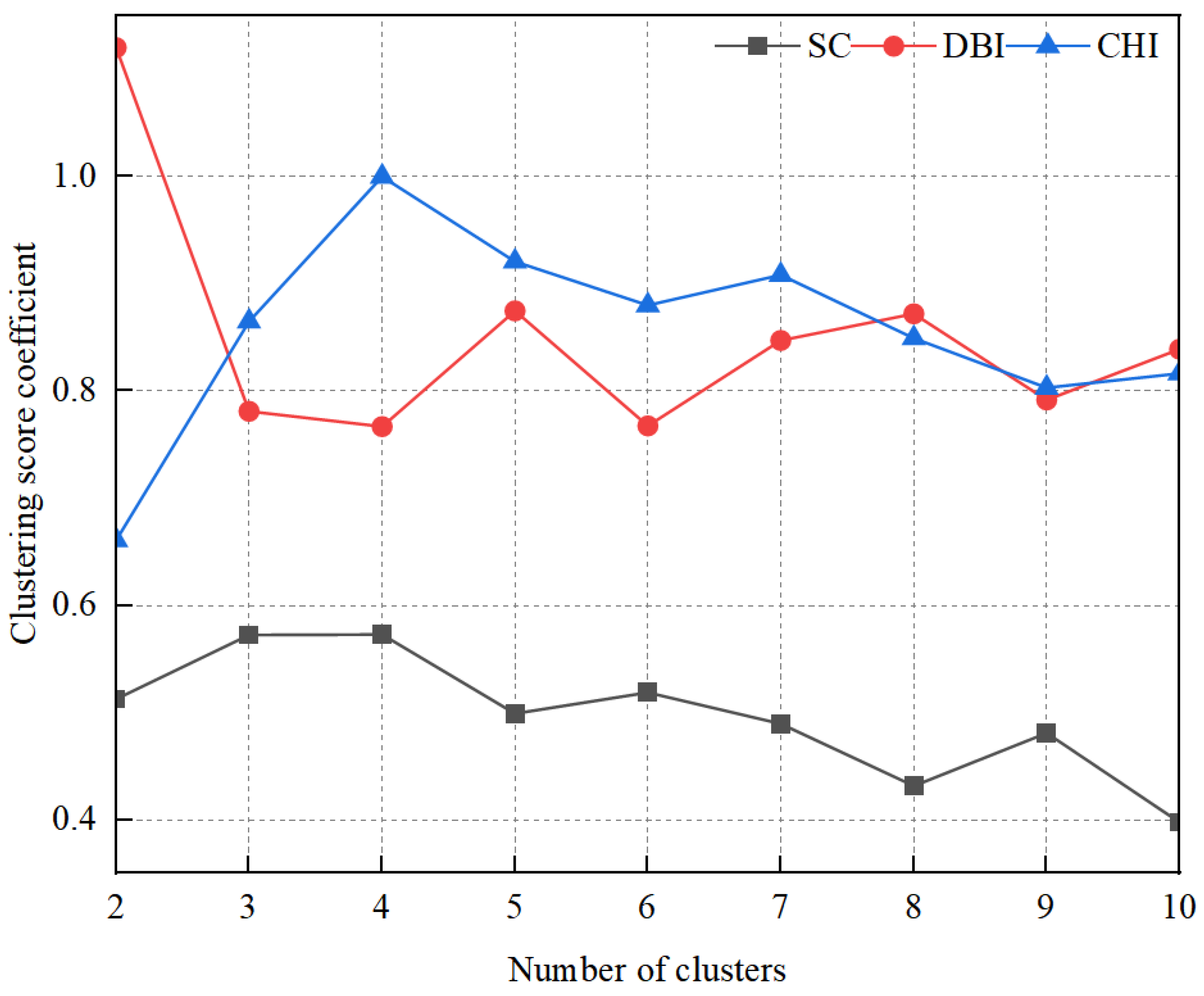
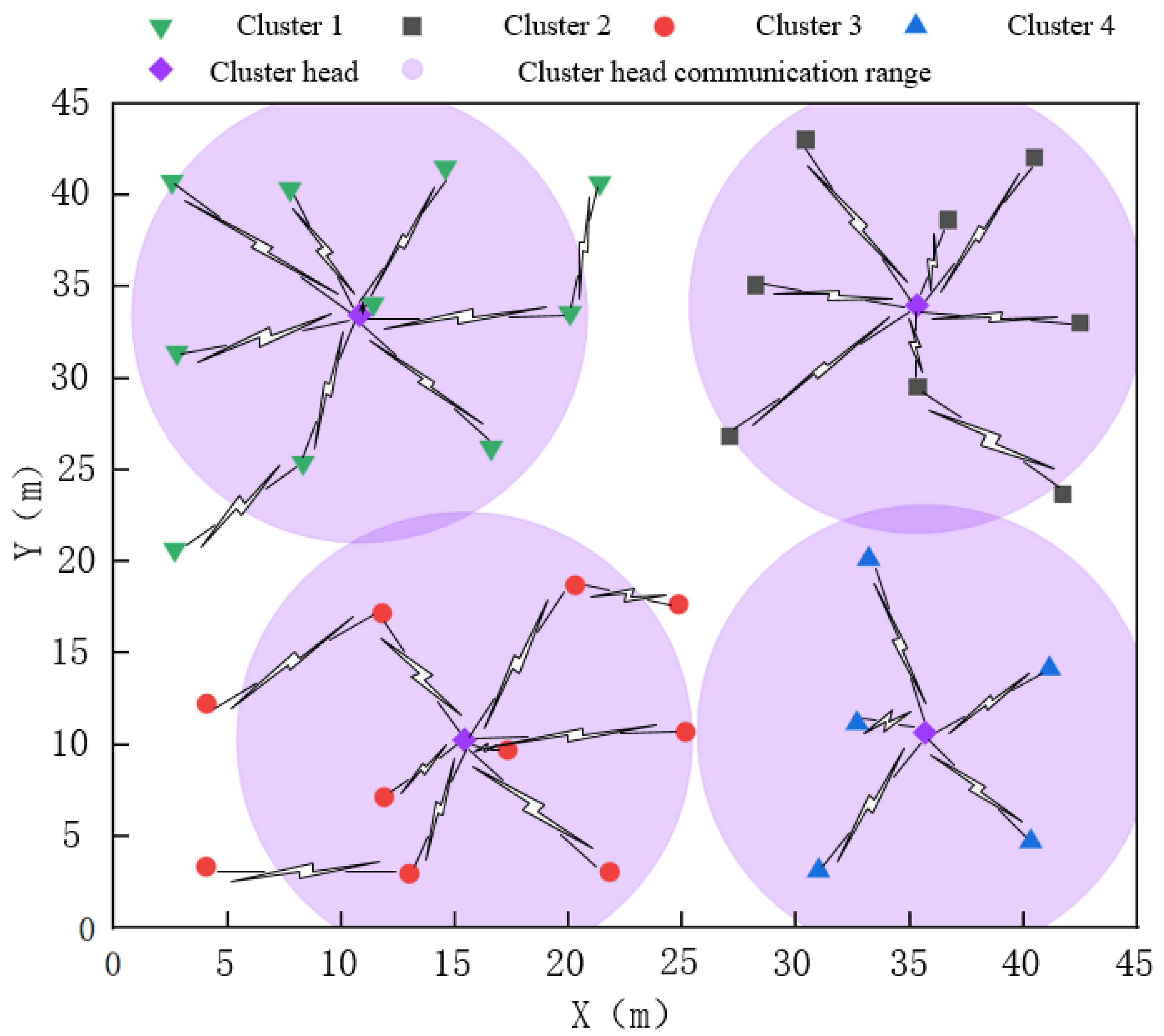
| Channel Number | 26 |
|---|---|
| Transmit power | 0 dB |
| Frequency | 2.4 GHz |
| MAC protocol | IEEE 802.15.4 |
| Monitoring Area | 45 m × 45 m |
|---|---|
| Sensor node sensing radius | 5 m |
| Maximum number of iterations | 500 |
Disclaimer/Publisher’s Note: The statements, opinions and data contained in all publications are solely those of the individual author(s) and contributor(s) and not of MDPI and/or the editor(s). MDPI and/or the editor(s) disclaim responsibility for any injury to people or property resulting from any ideas, methods, instructions or products referred to in the content. |
© 2025 by the authors. Licensee MDPI, Basel, Switzerland. This article is an open access article distributed under the terms and conditions of the Creative Commons Attribution (CC BY) license (https://creativecommons.org/licenses/by/4.0/).
Share and Cite
Luo, W.; Zeng, Y.; Zheng, X.; Zha, L.; Cai, W.; Wang, Q.; Zhang, J. System Design and Reliability Improvement of Wireless Sensor Network in Plant Factory Scenario. Agronomy 2025, 15, 751. https://doi.org/10.3390/agronomy15030751
Luo W, Zeng Y, Zheng X, Zha L, Cai W, Wang Q, Zhang J. System Design and Reliability Improvement of Wireless Sensor Network in Plant Factory Scenario. Agronomy. 2025; 15(3):751. https://doi.org/10.3390/agronomy15030751
Chicago/Turabian StyleLuo, Wenhao, Yuan Zeng, Ximeng Zheng, Lingyan Zha, Weicheng Cai, Qing Wang, and Jingjin Zhang. 2025. "System Design and Reliability Improvement of Wireless Sensor Network in Plant Factory Scenario" Agronomy 15, no. 3: 751. https://doi.org/10.3390/agronomy15030751
APA StyleLuo, W., Zeng, Y., Zheng, X., Zha, L., Cai, W., Wang, Q., & Zhang, J. (2025). System Design and Reliability Improvement of Wireless Sensor Network in Plant Factory Scenario. Agronomy, 15(3), 751. https://doi.org/10.3390/agronomy15030751





